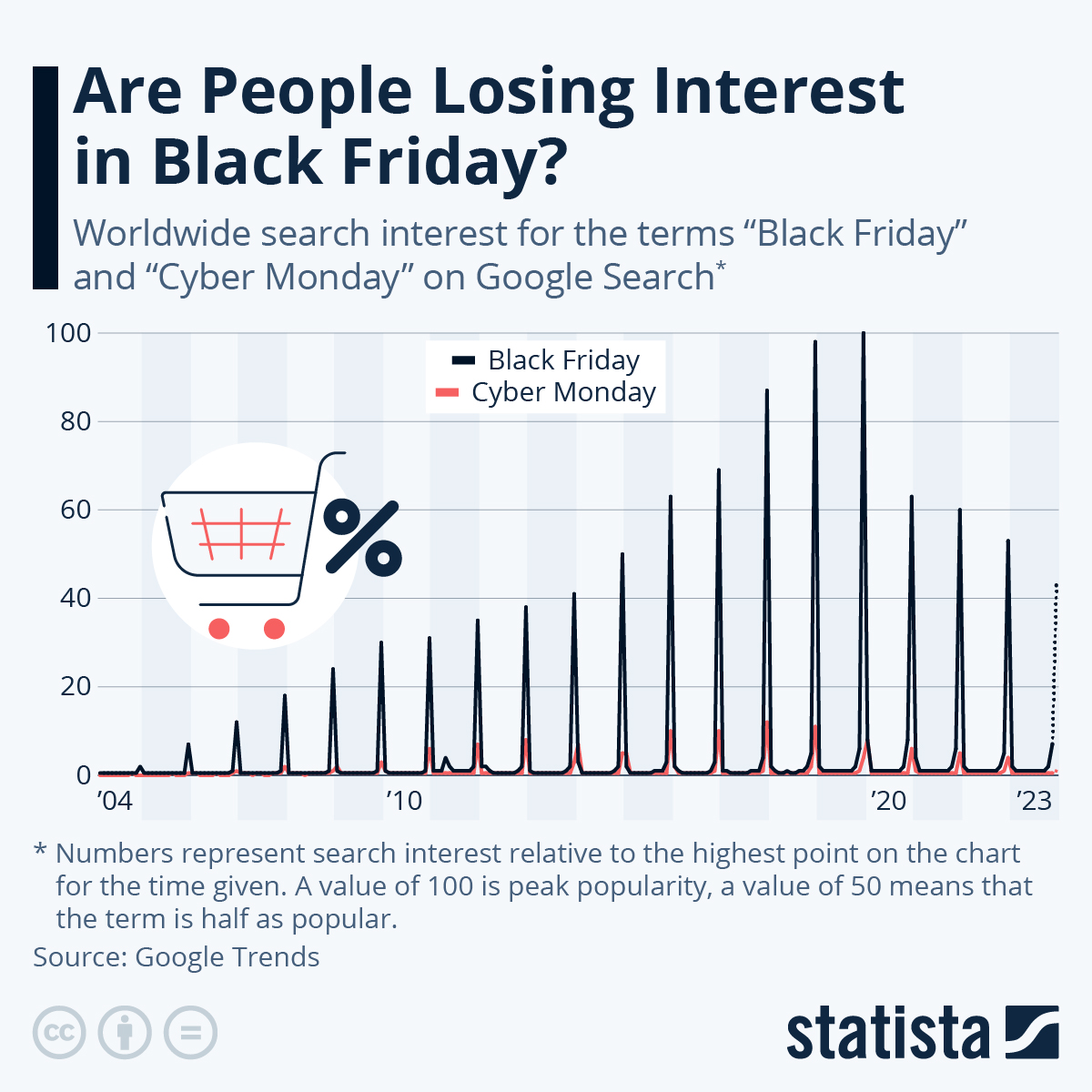While Black Friday still is the biggest day of the year for brick-and-mortar retailers in the United States, the rise of e-commerce has helped the concept of Black Friday discounts become a global phenomenon over the past decade. As the following chart, based on Google Search trends, shows, Black Friday is getting bigger every year in terms of consumer interest. Every year? Well, every year until the pandemic hit. In November 2020, Google search interest for the term "Black Friday" fell almost 40 percent short of the 2019 level. In fact, search volume was at the lowest level since 2015.
It will be interesting to see if searches for Black Friday deals will pick up again this year. Data from the U.S. suggests that consumers are ready to spend big this year, after Covid disrupted last year's holiday shopping season and the festivities themselves.

No comments:
Post a Comment